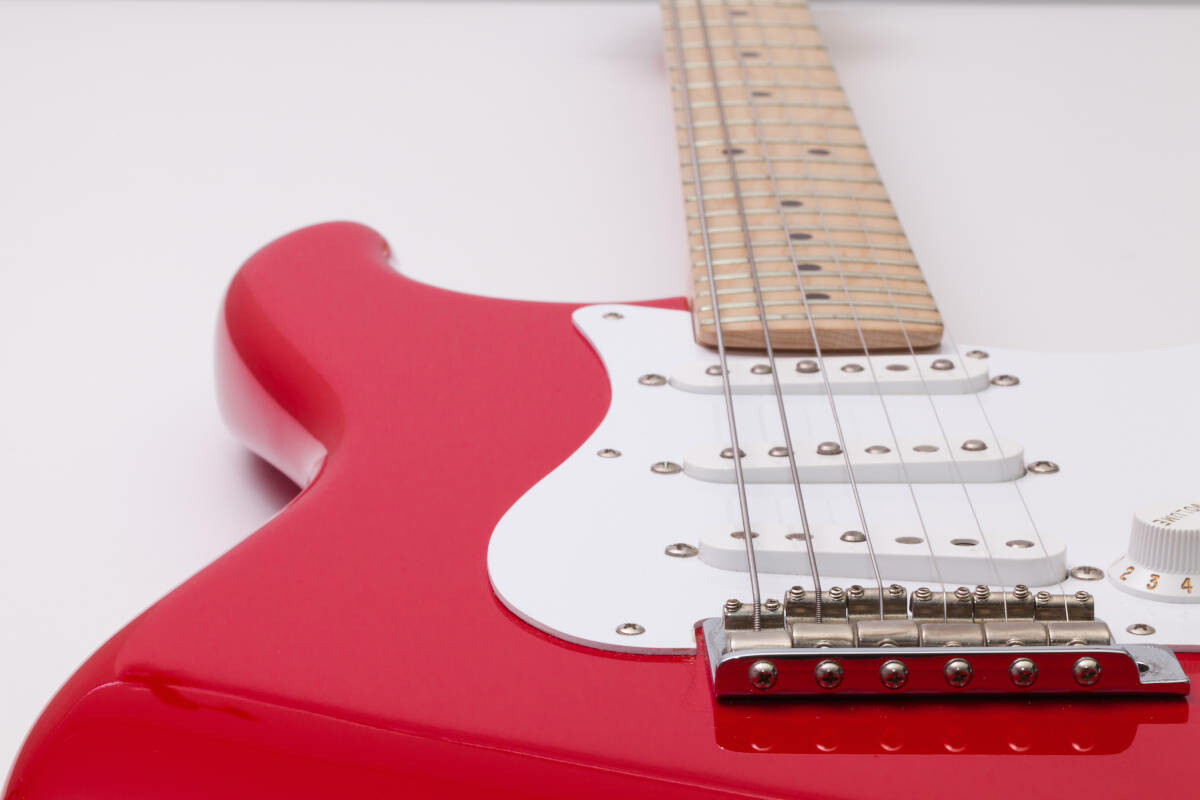My Guitar Is In Tune But Doesn’t Sound Right: What To Do?
If you play guitar, you probably know how frustrating it can be when your instrument sounds off, even though you tuned it correctly. You might wonder if there is something wrong with your guitar, your strings, your ears, or your technique.
The truth is, there are many possible reasons why your guitar doesn’t sound right, even if it is in tune. Some of them are easy to fix, while others might require more attention and expertise.
I’m going to show you how to make your guitar sound better and play more comfortably. You will also discover some tips and tricks to improve your tuning skills and avoid this issue in the future.

What Is Tuning And Why Is It Important?
Tuning is the process of adjusting the tension of the strings on your guitar to produce the desired pitches. The standard tuning for most guitars is E-A-D-G-B-E, from the lowest to the highest string. This means that when you pluck each string without pressing any frets, you should hear the corresponding note.
Tuning is important because it affects the sound quality and the playability of your guitar. If your guitar is out of tune, it will sound dissonant and unpleasant. It will also make it harder for you to play chords and melodies that match with other instruments or recordings. Moreover, tuning can affect the intonation and the action of your guitar, which we will explain later.
There are different ways to tune your guitar, such as using a tuner device, an app, a pitch pipe, a piano, or another guitar. You can also use different tuning methods, such as standard tuning, drop tuning, open tuning, or alternate tuning. Each method has its own advantages and disadvantages depending on the style and genre of music you want to play.
However, no matter what tuning method you use, you should always make sure that your guitar is in tune before you start playing. This will ensure that your guitar sounds right and that you enjoy playing it.
How To Check Your Intonation And Fix It
One of the most common reasons why your guitar doesn’t sound right even if it is in tune is because of poor intonation. Intonation is the accuracy of the pitch of each note along the fretboard. Ideally, each note should sound exactly the same as its corresponding open string or octave.
However, sometimes the intonation can be off due to various factors such as string gauge, string age, string tension, bridge position, nut height, fret wear, temperature changes, or humidity changes. This means that some notes might sound too sharp or too flat compared to their expected pitch.
To check your intonation, you need to compare the pitch of each string at the 12th fret with its open string. You can use a tuner device or an app to do this. If the pitch at the 12th fret is higher than the open string (sharp), then you need to move the bridge saddle away from the neck (towards the tailpiece). If the pitch at the 12th fret is lower than the open string (flat), then you need to move the bridge saddle closer to the neck (towards the headstock).
You can adjust the bridge saddle by using a screwdriver or an allen wrench depending on the type of bridge you have. You should make small adjustments and check the intonation again until it is correct. You should also re-tune your guitar after each adjustment because changing the bridge position will affect the string tension.
If you have an acoustic guitar with a fixed bridge or a classical guitar with nylon strings, then adjusting the intonation might be more difficult or impossible. In that case, you might need to change your strings or take your guitar to a professional for a setup.
How To Adjust Your Action And Fix It
Another possible reason why your guitar doesn’t sound right even if it is in tune is because of improper action. Action is the distance between the strings and the fretboard. It affects the playability and the tone of your guitar.
If your action is too high, it will make your guitar harder to play because you will need more finger strength and pressure to press the strings. It will also make your guitar sound dull and muted because the strings will vibrate less freely. If your action is too low, it will make your guitar easier to play but it will also cause buzzing and rattling noises because the strings will touch the frets.
To check your action, you need to measure the height of the strings at the 12th fret. You can use a ruler, a feeler gauge, or a capo to do this. The ideal action height depends on your personal preference and playing style, but a general guideline is that it should be between 1.5 mm and 2.5 mm for electric guitars, between 2 mm and 3 mm for acoustic guitars, and between 3 mm and 4 mm for classical guitars.
To adjust your action, you need to change the height of the bridge or the nut depending on which part of the fretboard is affected. You can raise or lower the bridge by using a screwdriver or an allen wrench depending on the type of bridge you have. You can also add or remove shims under the bridge saddle to fine-tune the height.
You can raise or lower the nut by using a file, a sandpaper, or a nut slotting tool depending on how much you need to change it. You should be careful not to file or sand too much because it might damage the nut or make the slots too wide or too deep.
You should also re-tune your guitar after each adjustment because changing the action height will affect the string tension.
If you are not confident or experienced in adjusting your action, you might want to take your guitar to a professional for a setup.
How To Change Your Strings And Fix It
Another possible reason why your guitar doesn’t sound right even if it is in tune is because of old or worn-out strings. Strings are made of metal or nylon and they can lose their elasticity, brightness, and tone over time due to corrosion, dirt, sweat, oil, or humidity. They can also break or snap due to excessive tension, bending, or picking.
To check your strings, you need to look at their condition and feel their texture. If they look rusty, discolored, frayed, or kinked, then they are probably old and need to be replaced. If they feel rough, sticky, or stiff, then they are probably dirty and need to be cleaned or replaced.
To change your strings, you need to remove the old ones by loosening them from the tuning pegs and cutting them with a wire cutter or a string winder. You should be careful not to scratch or damage your guitar when doing this. You also need to clean your fretboard and bridge with a cloth or a brush to remove any dust or debris.
Then you need to install the new strings by threading them through the bridge and winding them around the tuning pegs. You should follow the instructions that come with your strings or watch a video tutorial online if you are not sure how to do this correctly. You should also stretch your strings by gently pulling them away from the fretboard and tuning them several times until they settle in.
You should change your strings regularly depending on how often you play and what kind of strings you use. A general rule of thumb is that you should change them every month if you play every day, every two months if you play every week, and every six months if you play occasionally.
How To Improve Your Tuning Skills And Avoid This Issue
One of the best ways to prevent your guitar from sounding wrong even if it is in tune is to improve your tuning skills and habits. Tuning is not only something that you do before you start playing but also something that you do while you are playing. Here are some tips and tricks to help you tune better and more often:
- Use a tuner device or an app instead of relying on your ears alone. Tuners are more accurate and reliable than human ears and they can help you avoid tuning errors or inconsistencies.
- Tune up instead of down. This means that you should always loosen the string slightly before tightening it to reach the desired pitch. This will prevent the string from slipping or stretching too much and losing its tuning stability.
- Tune frequently and check for changes. You should tune your guitar every time you pick it up and every time you change locations or environments. You should also check for tuning changes during breaks or pauses in your playing session. This will help you catch any tuning issues before they affect your sound quality.
- Use fresh and quality strings. As we mentioned before, old or worn-out strings can lose their tuning stability and tone over time. You should replace them regularly




